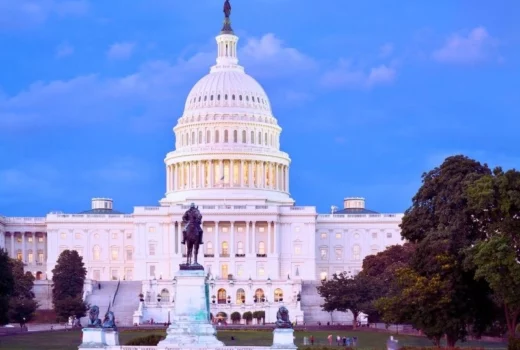
The American Lawyer released its annual Global 100 report, a ranking of the world’s 100 largest law firms by gross revenue, profits per partner, and total attorney headcount. Overall, gross revenue grew by 4.7 percent to $119.6 billion, and profits per equity partner increased, on average, by 0.4 percent. Attorney headcount also saw an increase this year, with an annual growth of 8.0 percent. Additionally, that same assessment can be applied to the Global Second Hundred, which grew at a 3.6% clip, resulting in total revenue of $33.1 billion, bringing the aggregate figure for the full Global 200 to $152.7 billion. According to the report, much of this growth can be attributed to head count increases, particularly in the Second Hundred, where firms increased their complement of lawyers by 10.2%.

The report revealed that a total of 50 firms cracked the $1 billion mark, up from 46 firms last year. Of the Global 200 firms on the list, United States accounted for 139 of the world’s top-grossing firms, followed by 25 from the United Kingdom, 10 firms from China, and 7 firms from Canada. Seventy-five firms equaled or topped $1 million in PEP, compared with 73 firms last year, the report notes. Additionally, this is the fifth time in the history of Am Law’s global ranking that U.S.-based firms occupied the top four spots. The top five firms in their respective order were Kirkland & Ellis, Latham & Watkins, DLA Piper, Baker & McKenzie and Dentons.
A wider look at the Global 100, ranked by revenue, offers a picture of stability, the report adds. Eight of the firms in 2019’s top 10 remained there this year, as Allen & Overy and Linklaters both slipped slightly. And only one firm, recent trans-Atlantic merger product Womble Bond Dickinson, exited the top 100, replaced by labor and employment specialists Jackson Lewis. The Global Second Hundred does have a handful of newcomers. The highest among them is Spain’s Uría Menéndez, at 167. The other fresh faces are Australia’s Corrs Chambers Westgarth, China’s Jingsh Law Firm and U.S. firms Foley Hoag and Fisher Phillips, (as quoted in The American Lawyer).
See the full rankings and highlights from The Global 100 on The American Lawyer.
Contact Bill Sugarman for more information.
The American Lawyer reports that 2019 was a record-breaking year for law firm merger announcements and represented a “solid year of growth” for completed mergers, according to recent data collected by two legal industry consultancy firms tracking law firm tie-ups. Altman Weil, which tracks law firm merger announcements, announced that last year’s 115 combinations broke the record set by the U.S. legal industry in 2018, which saw 106 announcements. Additionally, another report by legal consultancy firm Fairfax Associates, which counts combinations once they are completed, announced that firms completed 59 mergers in 2019. While this is lower than the 71 mergers counted in 2018, it is still higher than the historical average of 54 mergers per year recorded between 2009 and 2018, Fairfax notes.

Two of the largest merger announcements from 2019 took effect the first day of the new year: Taft—the result of Cincinnati-based Taft Stettinius & Hollister merging with Minneapolis-based Briggs & Morgan—and Lathrop GPM, the offspring of Kansas City, Missouri-based Lathrop Gage and Minneapolis-based Gray Plant Mooty. Aside from Taft and Lathrop GPM, ten more law firm mergers are scheduled to close in the first quarter of 2020, Fairfax reports. This includes Dentons’ combinations with Indianapolis-based Bingham Greenebaum Doll and Pittsburgh-based Cohen & Grigsby as well as the pending marriage of Minneapolis-based Faegre Baker Daniels and Philadelphia-based Drinker Biddle & Reath, (as quoted in The American Lawyer).
The majority of mergers in 2019 continued to be small combinations, with eighty-five percent of the mergers involved firms between five and 20 lawyers, Fairfax reports. “We are continuing to see firms anywhere from 100 lawyers to 600 to 700 lawyers feel like they need more scale in order to compete effectively,” notes Lisa Smith, a principal at Fairfax Associates. “I think we’ll continue to see consolidation in the form of laterals and groups or small acquisitions or mergers of equal size. Consolidation is going to continue to be big in 2020,” she adds. Additionally, Zeughauser Group consultant Kent Zimmermann notes law firms are competing hard for talent. Deciding to scale up and merge can give a law firm a deeper bench and greater revenue, which can mitigate and ward off the poaching of top talent by other firms, (as quoted in The American Lawyer).
See highlights from the full article on The American Lawyer.
Contact Bill Sugarman for more information.
The American Lawyer released their annual Global 100 report, ranking the top law firms across the world. The report is based on gross revenue as well as number of attorneys and profits per partner. Attorney headcount saw an increase this year, with an annual growth of 6.4 percent. Overall, gross revenue grew by 3.1 percent for The Global 100, and profits per partner increased, on average, by 4.9 percent.

Latham & Watkins reigned in at No. 1 again this year, with the highest gross revenue of The Global 100. Close behind leader Latham was Baker & McKenzie and DLA Piper in spots 2 and 3, respectively. Skadden also remained in its respective spot from last year, coming in at number 4, with a higher revenue per lawyer average than each of the other top 5 firms. Kirkland advanced one spot to No. 5 this year, knocking Dentons down to number 6.
See the full rankings and more of the highlights from the AmLaw Global 100 on The American Lawyer.
Contact Bill Sugarman for more information.
According to Am Law Daily, mixed opinions were exchanged last week at the International Bar Association’s annual conference, regarding the risks and benefits of law firms’ global development. Lawyers traded their thoughts during a panel discussion on Wednesday. “We were forced by our clients,” to expand abroad, said Antonio Barba, a partner with the Spanish law firm Cuatrecasas, Goncalves Pereira.

Peter Pantaleo, general counsel at DLA Piper, said, “I can guarantee any law firm in this room can make a small fortune going abroad, if they’re prepared to lose a large one.” Pantaleo explained the risks, alluding to DLA Piper’s office in Singapore and the losses it faced in an effort to open its doors. DLA also recently closed their office in Venezuela because of the political risk at hand. Other firms, such as Fried, Frank, Harris, Shriver & Jacobson, are facing the same problems. The firm planned on expanding to Hong Kong and Shanghai last year but pulled out because of global setbacks they’re facing.
The most substantial risk for law firms that are expanding globally is the clash of cultures in different countries, according to the American Lawyer. “Clients are deeply turned off when they walk into a room in Bogota and see me sitting there,” said Elliott Portnoy, Denton’s CEO, who is based in Washington.
On the other hand, the American Lawyer points out, there are definite benefits to a firm’s global expansion. Pantaleo went on to explain that the Swiss verein model works well for DLA Piper and other firms. The structure allows offices to work more independently while protecting each country’s revenue. The partners don’t have to worry about foreign tax policies, and the model makes it easier to adjust compensation and staffing.
View the full article from the Am Law Daily on the American Lawyer.
Contact Bill Sugarman, a legal recruiter, for more information.
The National Law Journal released the very first NLJ 500 this year: a compilation of the 500 largest U.S.-based law firms. This year, in addition to the annual report of the top 350 largest firms, NLJ included 150 more law firms and ranked those into two tiers: “mid-tier” and “on-the-cusp-of-Big-Law” firms.

Dentons, previously one of the largest U.S. firms, has been removed from the NLJ 500 due to its expansion and large number of attorneys in China. In order to make the cut, firms must have more lawyers in the U.S. than in any other country. It comes as no surprise that Baker & McKenzie is leading the chart for a second year with a mass of 4,363 lawyers.
San Francisco based Farella Braun + Martel just made the cut making them the smallest firm in the top 350. Overall, the smallest firms that made the NLJ 500 were Davis, Brown, Koehn, Shors & Roberts in Des Moines; Goldberg Kohn in Chicago; and BatesCarey in Chicago. The most shocking decline on the NLJ 500 for 2015 was Kenyon & Kenyon’s 29% decrease in head count of attorneys.
For more information, contact Bill Sugarman.
The world’s largest law firms are still feeling the heat from their stagnated approaches, as discussed in last week’s post. A report released by CounselLink concluded that firms with 201 to 500 attorneys–termed “large enough” firms–are “increasingly winning the market share at the expense of the largest U.S. law firms.”

CounselLink Strategic Consulting Director Kris Satkunas suggests that the success of these ‘large enough’ firms is generally due to lower billing rates (for similar levels of service) and the increased willingness to engage in AFAs, the ‘Alternative Fee Arrangements’ widely preferred by clients today. She reports that as a result, corporate clients are “finding the same value from this size law firm for less or at least more predictable costs–and that is driving the migration of legal work into this segment of the law firm market.”
This trend is exemplified in the recent layoffs by megafirm Reed Smith, a 1750+ attorney firm who laid off 45 lawyers and a “comparable” number of administrative staff in January 2016, according to their press statement. Sandy Thomas, the global managing partner at Reed Smith who gave the statement, blamed the layoffs on the “fundamental shift in the nature of the demand for, and the delivery of, legal services in recent years.”
Another ‘big law’ firm, global giant Dentons, (now, with a 6,600 employee headcount, the largest law firm in the world), has been the subject of skepticism for its continued ‘bigger is better’ growth philosophy. Jordan Furlong of global law firm consultancy Law21 argues that since there are already many multinational firms, “having dozens of offices and thousands of lawyers isn’t enough to set you apart, and I’m not sure if 80 offices and 8,000 lawyers will do it either” (as quoted in The American Lawyer).
Time will tell if “bigger really is better” for today’s law firms, but for now, all signs seem to point to an ideal amalgamation of factors for middle market firms to flourish.
The National Law Journal recently released a review of the major legal news in Washington’s ‘big law’ for 2015, including reports on the paramount moves and mergers, influential administrative changes, and the “reinvention” of the D.C. law practice.

Dentons continues its reign as the world’s largest firm, announcing ten “tie-ups” with other firms in 2015, including those in China, Australia, and Mexico, among other countries (as reported by the National Law Journal).
Litigators with multi-millions in portable business and experience in the federal government were in high demand, according to the National Law Journal, since “the hotbed of white-collar enforcement activity is now centered squarely in Washington, D.C.” (Debevoise & Plimpton partner David O’Neil, as quoted by The National Law Journal). Many former representatives and senators flocked to the ‘big law’ D.C. firms in search of positions in lobbying and legislative practice groups.
In fact, despite the financial drawbacks of lobbying as a legal practice, the National Law Journal announces that “the large law firms in Washington still want to do it.” And lobbying certainly got its fair share of the limelight when Former House Speaker Dennis Hastert, a Washington lobbyist, pleaded guilty to federal charges of evading currency-reporting requirements by illegally structuring cash withdrawals.
Read more about these and the other legal trends of 2015 in the National Law Journal.